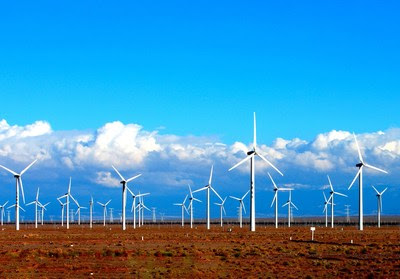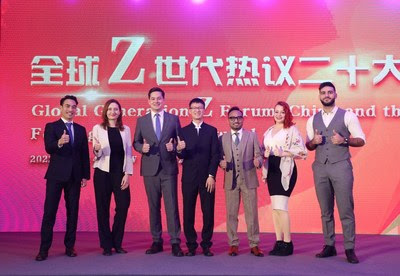Good morning, good afternoon, and good evening.
This week I had the privilege of travelling to Brussels for the launch of the European Union’s Global Health Strategy.
The EU is a key partner for WHO, and has played a leading role in global health. It was a driving force behind the creation of the ACT Accelerator, and has been one of the largest funders of COVAX.
The European Union’s new global health strategy is closely aligned with WHO’s priorities, and will help to tackle many of the most pressing challenges in global health, from addressing the root causes of disease, to supporting countries on the road to universal health coverage, to making our world safer, and the final eradication of polio.
I was also very grateful to sign an agreement with Commissioner Urplilainen for a contribution from the European Union of 125 million euros to support WHO’s UHC Partnership, which is supporting 115 countries to progress towards universal health coverage.
My deep thanks to the European Union, its Member States, and the people of Europe.
===
This support comes at a critical time.
Our world is facing a deadly combination of war, starvation and disease.
Yesterday, the United Nations Office for the Coordination of Humanitarian Affairs launched its Global Humanitarian Overview for 2023, appealing for US$51.5 billion to meet humanitarian needs around the world next year – an unprecedented amount to meet unprecedented needs.
A record 339 million people will require humanitarian aid in 2023 – one in every 23 people on the planet.
Humanitarian crises affect people in all aspects of their lives, including reducing their access to health care, often at the exact time when they need it most.
Those fleeing conflict or drought, or living in poverty and facing hunger, are also those whose health is the most threatened.
In humanitarian crises, health interventions like immunization, disease surveillance and the treatment of malnourished children can be the difference between life and death.
===
Last Saturday marked one year since WHO announced a new variant of concern in the COVID-19 pandemic: the Omicron variant.
Omicron has proved to be significantly more transmissible than its predecessor, Delta, and continues to cause significant mortality due to the intensity of transmission.
The number of weekly deaths reported to WHO has declined slightly over the past five weeks, but more than 8,500 people lost their lives last week – which is not acceptable three years into the pandemic, when we have so many tools to prevent infections and save lives.
Since the emergence of Omicron, the virus has continued to evolve.
Today, there are over 500 sublineages of Omicron circulating.
They are all highly transmissible;
they replicate in the upper respiratory tract and tend to cause less severe disease than previous variants of concern;
and they all have mutations that enable them to escape built-up immunity more easily.
WHO estimates that at least 90% of the world’s population now has some level of immunity to SARS-CoV-2, due to prior infection or vaccination.
We are much closer to being able to say that the emergency phase of the pandemic is over – but we’re not there yet.
Gaps in surveillance, testing, sequencing and vaccination are continuing to create the perfect conditions for a new variant of concern to emerge that could cause significant mortality.
WHO continues to urge all countries to take a risk-based approach that protects both public health and human rights.
===
Earlier this week, WHO announced that we will begin using “mpox” as a synonym for monkeypox. Both names will be used for one year while the name “monkeypox” is phased out.
Meanwhile, the global mpox outbreak continues to decline, with 620 cases reported last week – more than 90% less than the peak in August. Most cases are being reported from Latin America.
===
Finally, yesterday was World AIDS Day – an opportunity to re-affirm and refocus on our shared commitment to end AIDS as a public health threat by 2030.
We have just 8 years left, and we’re not where we need to be.
The pandemic badly disrupted access to treatment and services for HIV in many countries, while in other areas like Tigray, conflict, displacement and other humanitarian emergencies are depriving people of access to the care they need.
While more than 28 million people are on life-saving antiretroviral therapy, new infections and deaths are not decreasing fast enough;
And severe inequalities and inequities prevent people from getting the care they need.
More than 650 000 people died of AIDS-related causes last year, and 1.5 million people were infected with HIV.
Nearly 6 million people who are living with HIV are not receiving treatment;
A further 4 million people have contracted HIV, but have not been diagnosed;
And nearly half of the children who need treatment cannot access it.
Key populations – men who have sex with men, transgender people, sex workers, people who inject drugs or are in prison – continue to face many barriers to care.
With their partners, these populations make up 70% of all new infections globally.
While transmission has declined in Africa, there has been no significant decline in HIV among men who have sex with men in Africa over the past 10 years.
The outbreak of mpox shows that infections can move quickly in sexual networks – but with community-led responses and open attitudes to address stigma, transmission can be prevented and lives can be saved.
So on World AIDS Day – and every day – WHO is calling on all countries to equalize the response to HIV.
Margaret, back to you.
Source: World Health Organization




